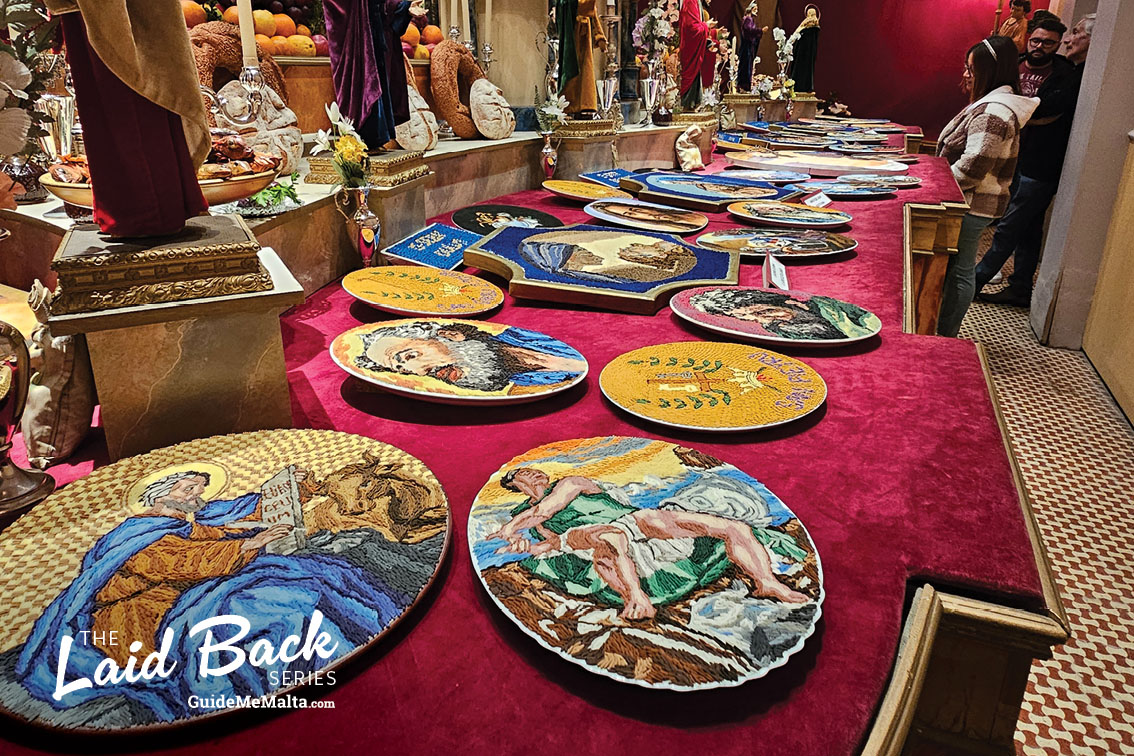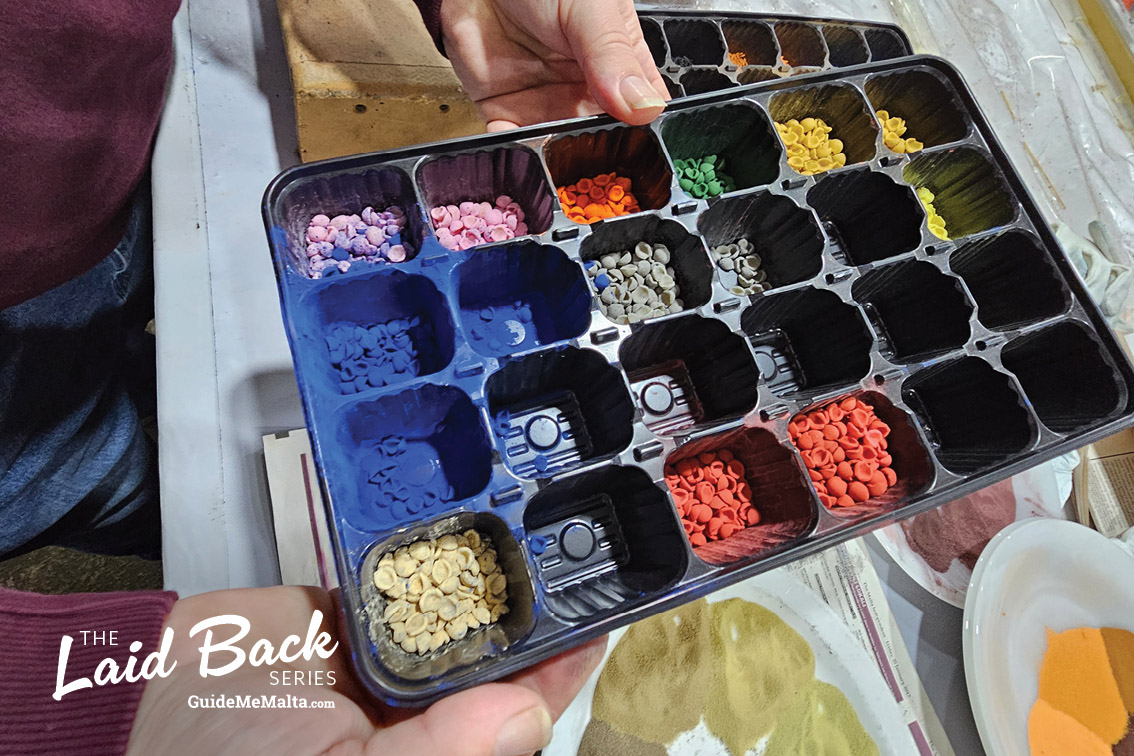David Cioffi explains how the group of volunteers he leads, work tirelessly to provide the feast of colour and creativity at the annual salt and rice artistic display.
It’s Easter time in Malta, possibly one of the richest, most colourful seasons to visit the island. With processions, pageantry, and seasonal goodies being dished out on the daily, Christianity’s most significant holiday of the year, brings with it a feast for all the senses.
Edward Bonello visited one of the island's oldest exhibitions to be set up at this time of year, which will soon be celebrating their first proud centenary – Cospicua’s salt and rice artistic Holy Week exhibition at the famous Domus Pius IX.
“Our organisation was established in 1926 and operated as a youth centre for locals. The main activity of the year was always the setting up of a Good Friday-themed display this time of year,” explains David Cioffi, 54, Exhibition Director at the Domus. Referred to in Maltese as ‘Mejda tal-Appostli’ (The Apostles’ Table), the intricate exhibition is inspired by the episode of the Last Supper of Jesus with his 12 disciples, in an age-old tradition of artistic allegories.
“Back then, they started by creating designs symbolising religious scenes and episodes, made out of pasta and rice. Then in the 60s, our pioneering forefathers, made an unprecedented breakthrough, introducing the finer, more intriguing medium of salt, which gives substantially more liberty to the artist, but also a significant challenge.”

The tradition of setting up such elaborate displays is a very ancient one, with the oldest one being set up in Valletta. All the pasta and rice used on that particular display is donated to families in need, right after Easter.
“It is an extremely laborious process which requires tremendous concentration and dedication to the craft. One plate can easily take upwards of 30 hours of work. This all happens in our volunteers’ free time, an hour or two at a time after work, in the evenings,” David continues. “We are happy to be able to attract a nice number of enthusiasts of all ages, who start working on their art for the exhibition, as early as October.”
David explains that the theme of the exhibition is changed each year, with this edition inspired by the Seven Sorrows of Mary. The Catholic world reflects on seven sorrowful episodes from the life of the mother of Jesus, as they provide spiritual guidance and an opportunity for reflection during the religious season.
“We often like to seek Theological guidance from an erudite member of the clergy when choosing our theme, as some subjects may be more intricate than others, and to ascertain that our art remains spiritually sound,” David clarifies. “Then it is up to the creativity of our artists to create the most stunning and eye-catching pieces, which visitors can feast their eyes on.”
In fact, Cospicua’s Domus is proud to see participants of all backgrounds come to its doors to lend a helping hand. “One of our centrepieces on display this year was created by an elderly lady, well in her 70s, while a series of rice plates were crafted by a young person with an intellectual disability. Through our art, we are happy to reach out to many people, who come to help, but also to the thousands who visit during our opening hours,” David expounds.

They start by dying the salt, pasta, and rice, to the desired hue, in its various graded shades. Then it’s a matter of patience and love.
A master salt artist himself, David visibly takes great pride in the excellent quality of the display, which together with his colleagues is reached each year. For him, it is a passion which goes back many decades.
“As a little boy, I used to accompany my father who was a volunteer at the Domus and be fascinated by the incredible art. Back then, this was one of the very few Easter time exhibitions on the island, and the queues of visitors during Holy Week were extraordinary. So naturally, my ambition was to one day create a plate for this famous display. That honour came at the young age of just eight, when I was entrusted to produce a piece made of rice. By the age of 14 I was promoted to the medium of salt, and the rest is history.”
“Today we are dedicated to keeping this tradition alive, with initiatives taking place all year round. Last year, through the Cultural Directorate we participated in an international congress for flower carpets and ephemeral art in Barcelona promoting our unique craft. Our aim is to get this ancient artisanal practice recognised as an example of intangible cultural heritage by UNESCO,” David concludes.
This feature forms part of The Laid Back Series by GuideMeMalta.com. Bringing to light unique characters, local traditions, and the beauty of old Malta, we search every corner of the Maltese islands to find the most unique of stories that are sure to delight and bring a sense of nostalgia to our readers.
Do you have a fascinating story to tell? Drop us a line at [email protected]
